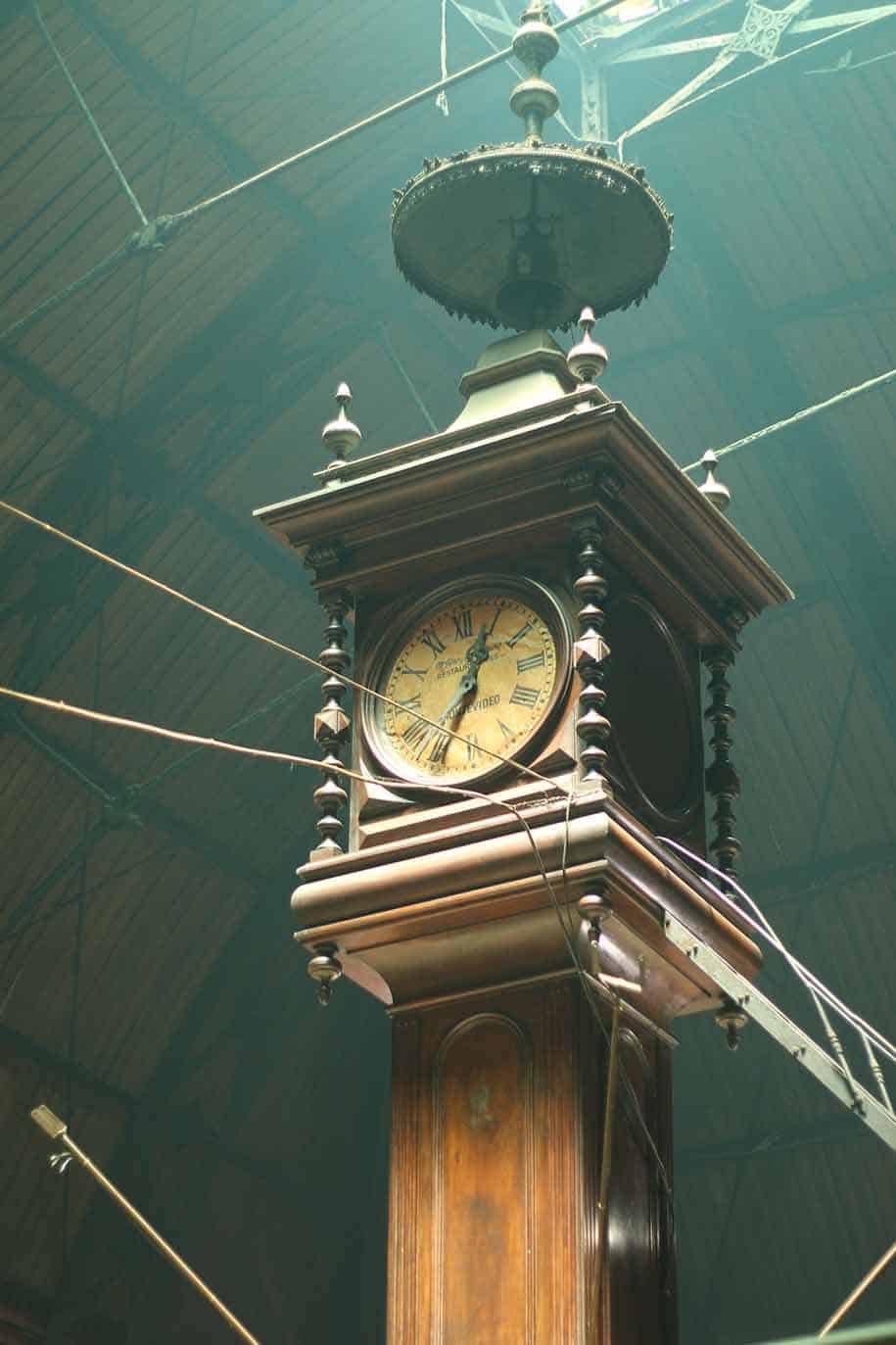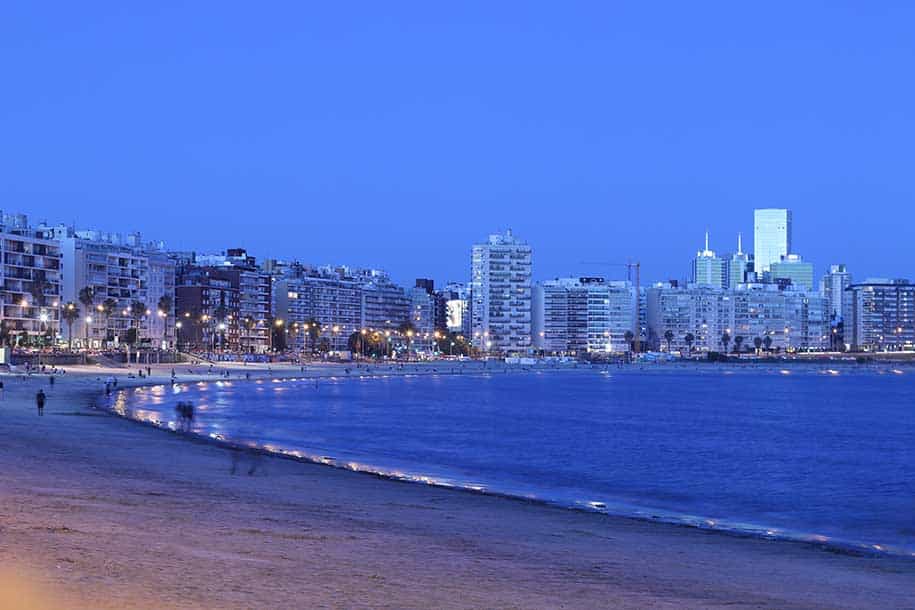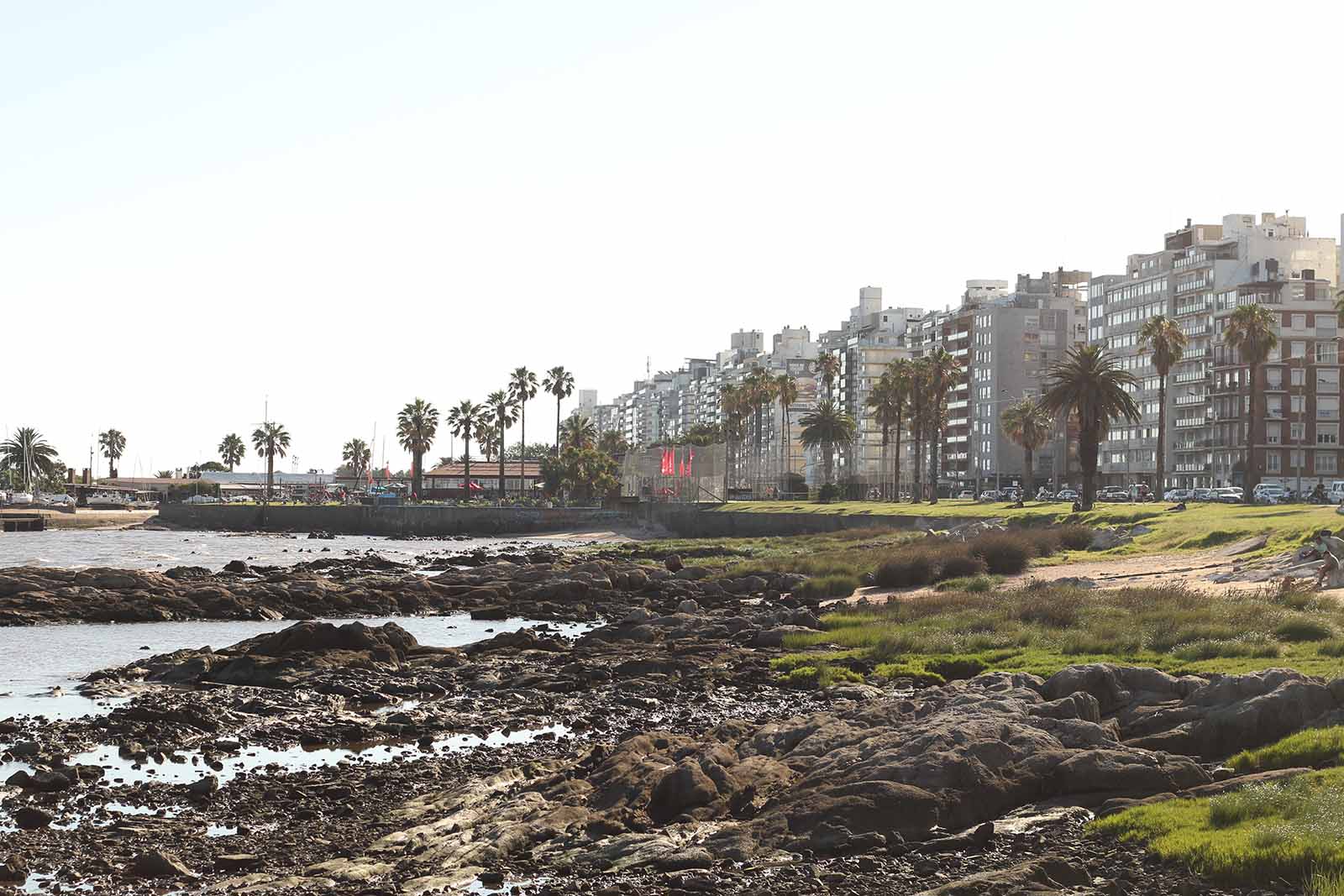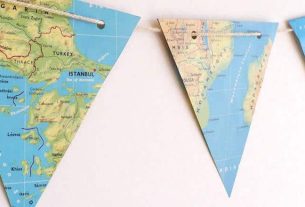Every year, around 500,000 Brazilians cross the border – by land, water or air – and enjoy their days off in Uruguayan territory. Smaller than several states in Brazil, but full of attractions, our neighbor to the south easily makes for an incredible week. And those who stay longer don’t complain. In this text you will find a complete guide when shopping in Uruguay.
And I’m not talking about household appliances, mind you, although I also give directions for those looking to make this type of purchase. Our focus here is on products that function as travel souvenirs, such as wine and dulce de leche.
Throughout the article, I will talk in detail about the following topics:
- What currency to take and use when shopping?
- Is it worth making purchases with a credit card in Uruguay?
- How does VAT return and taxfree work?
- What are the best places for your shopping?
- What to buy on the trip?
- Duty-free shops at borders and airports
- Brazilian rules for those who make purchases in another country
And if you’re in the middle of planning your trip, be sure to read other important articles:
See also: Uruguay by car, a complete guide to organize your trip
Uruguay wineries – the wine map near Montevideo
Where to stay in Montevideo – our tips on hotels and neighborhoods
What currency to take to Uruguay?
Take reais and that’s it. In reality, the big trick is not in the currency, but in the amount of money you must have and also how much to exchange. For my last trip, which lasted five days, I withdrew eight hundred reais in Brazil. I exchanged it for Uruguayan pesos only once, still at the border, and even then only 200 reais. And I only spent half.
In Uruguay, it really pays off to pay almost everything with a credit card, due to the VAT exemptions made by the government. But at the same time, it’s never good to be without any money. Therefore, the best option is to exchange money little by little, as needed. Increase the amount of Uruguayan pesos in your wallet if you are traveling inland or outside tourist areas.
Did you know? Travel insurance may not be mandatory to pass through Uruguayan immigration, but it is an essential item for the traveler’s safety – and it costs less than R$10 per day of vacation. See how to buy the best coverage for Uruguay.
How do credit card purchases work in Uruguay?
For years, Uruguay has returned most of its VAT to tourists, one of the country’s most important taxes. This means, in general, 18% less on bar and restaurant bills than the price that will be stated on the menu. An economy that covers – and still remains – the Brazilian IOF.
The big thing is that the tax return is only made for payments with an international card. Those who pay with Visa see the discount immediately and take the smaller bill home; Those who use Mastercard pay the total, but only receive the tax amount back a few days later – so it may only be on the next invoice.
In addition to bars and restaurants, pay attention to establishments such as wineries: some have restaurant registrations and therefore give a discount. And there is also less tax when booking hotels, but the value shown by Booking, at the time of booking, already includes a discount on tax and car rental. In both cases, you must pay with an international card and on Uruguayan soil.
Wineries near Montevideo
In addition to VAT exemption in restaurants, bars, hotels and car rentals, Uruguay offers tax free for purchases of products costing over 600 pesos. This goes for clothes, shoes, souvenirs and crafts, for example. To benefit from this, you must buy from stores that are part of Global Blue (look for signs indicating this or a tax free sticker on the doors of establishments).
When purchasing, inform the seller that you want the fees waived. He will ask you for documents and provide a form, which you must fill out. Then, simply present this documentation at one of the 13 tax-free self-management points located at the country’s exit points, both at international airports and in some border cities. If you have to catch a flight, remember to arrive at the airport early, as the process may not be quick. The tax money will be refunded to your card statement.
There are tax return offices at Carrasco International Airport, Laguna do Sauce Airport, the Port of Montevideo, the Port of Colônia, the Punta del Este Cruise Arrival Point, the Salto-Concórdia Bridge, the Paysandú Bridge, Colón, on the Fray Bentos-Porto Unzué Bridge and on Chuy.
What to buy on a trip to Uruguay
Don’t be surprised to discover that the cost of living in Uruguay can be higher than in Brazil. From restaurants to supermarkets, you’re likely to spend a little more there than at home. But if Montevideo isn’t exactly a shopping paradise for tourists, some items fit into your suitcase without breaking your budget. The most basic are wines – especially tannat, a Uruguayan symbol – and typical products, such as dulce de leche or alfajor.
In 2016, the Ministry of Agriculture allowed industrialized products of animal origin to enter Brazil, putting an end once and for all to the problem of shipments of dulce de leche seized at airports. Today you can bring cheeses, sausages and sweets without risk, as long as they are in their original packaging and with labels. See the rules and limits per person here.
In addition to food products, handicrafts and souvenirs, the border region, especially the city of Rivera, attracts many residents of southern Brazil to its duty-free shops. Whether or not a product is worth it depends on the dollar value and your travel costs, but it’s a good idea to always check the items on the shelves. I saw people taking everything from air conditioning units to t-shirts.
If you choose to invest in dulce de leche, brands such as Nietitos, Conaprole, Narbona and Lapataia are some of the most traditional. If you prefer drinks, wineries such as Pizzorno, Bouza, Juanicó and H. Stagnari produce quality wines. And also keep an eye out for alfajores and Medio y Medio, a typical Uruguayan drink.
Where to buy: from markets to duty-free shops
There is no shortage of markets to shop in Montevideo. Declared a National Heritage Site and occupying a beautiful building, the Agricultural Market is the address to buy typical products and visit tourists.
And if you’re lucky enough to pass through the city on a Sunday, don’t miss Tristán Narvaja, one of the biggest street fairs in Latin America. You’ll find a little bit of everything there: from fruits and vegetables to used (or counterfeit) clothes. But for travelers, the highlight for shopping is the antiques sector. In it, just wander through the alleys to find interesting things that make great souvenirs or travel gifts.
Furthermore, shopping malls and craft stores are always good options. Don’t forget to also check the supermarket shelves, great options to guarantee the best travel souvenir: the one that fills your belly. If you prefer to bring wine, a good alternative is to buy directly from wineries – and there are dozens of them around Montevideo.

Mercado del Puerto, in Montevideo
Free shops
Every duty-free shop has a catch. The purchases you make in tax free establishments in Uruguay, whether at the airport or at the border, are exempt from Uruguayan taxes. But this does not mean that they are free of taxes from the Federal Revenue, upon your return to Brazil – in this case, without taxes, only the duty-free return shops, like the one at Guarulhos Airport when you do your shopping right after returning to the country . If you buy in Uruguayan duty-free stores, be aware of the limits of the exempt quota, which will be explained in the topic below.
In addition to the airports, there are duty-free shops in cities such as Rio Branco, Chuy and Rivera, on the border with Brazil and which end up becoming strategic stops for those traveling by car. We stopped in Rivera, the city with the largest number of duty-free shops on the border between Brazil and Uruguay.
The rules for shopping in Uruguay
There are two types of exempt quotas for those traveling abroad:
- If the trip is by air or sea, the value of tax-free purchases, upon return to Brazil, is 500 US dollars. In other words, if you arrive and depart from Uruguay via Montevideo airport, your purchases, up to a limit of 500 dollars, will not be charged. What passes will be taxed.
- If the trip is by land, the exempt value drops: 300 dollars. And an important thing, for those traveling by car, is to be aware of possible changes, because for years the Brazilian government has been trying to reduce this value by half.
In addition to the method of transport, you must pay attention to the numerical limits: up to 20 units of products priced below five dollars – and a maximum of 10 of them identical. For products costing five dollars or more, the maximum limit is 10 units, but only three identical ones.

There are also quantitative rules for alcoholic beverages (12 liters) and cigarettes (10 packs, 20 units each). And remember that the quota is personal and non-transferable. So a car with 5 people, including a child, does have five quotas, but adult products – such as alcoholic drinks – will not be included in the minor’s car.
Finally, there are products, considered as circumstances of the trip, that do not use the exempt quota. This is the case with cameras, watches and cell phones, as long as you go through immigration with proof that they were used and needed during your vacation.
Sign up for our newsletter

Sign up for our newsletter and stay up to date with exclusive news
that can transform your routine!
Warning: Undefined array key "title" in /home/storelat/public_html/wp-content/plugins/link-whisper-premium/templates/frontend/related-posts.php on line 12
Warning: Undefined array key "title_tag" in /home/storelat/public_html/wp-content/plugins/link-whisper-premium/templates/frontend/related-posts.php on line 13




